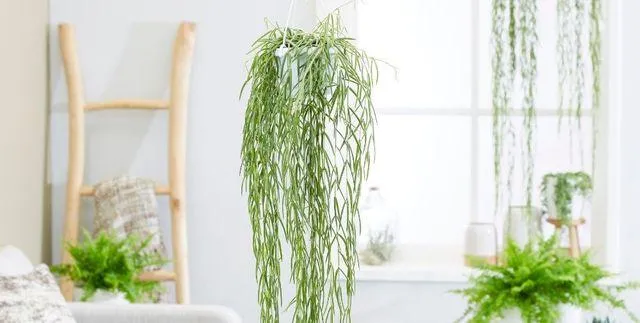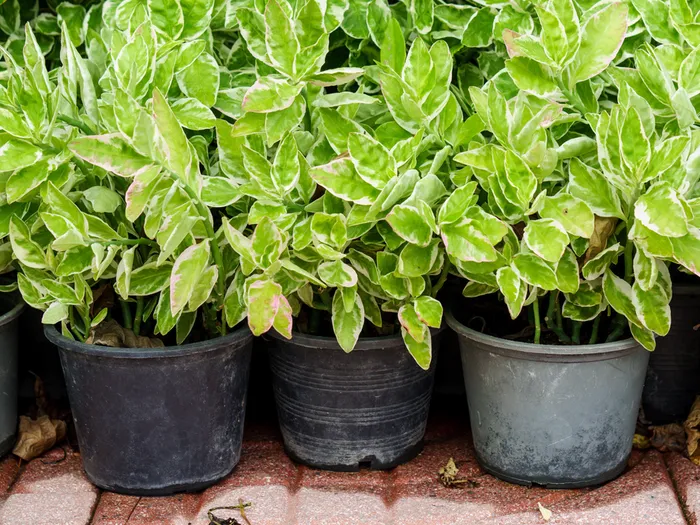The Ultimate Guide to Choosing the Best Indoor Hanging Plants
If you’re looking to add some fresh greenery to your home but don’t have much floor space, indoor hanging plants are the perfect solution. From my experience decorating small apartments, hanging plants are a great way to make a small space feel more lush and inviting. In this article, I’ll cover all the important factors to consider when selecting indoor hanging plants, as well as some top plant varieties that thrive when suspended.
Traits to Look for in Hanging Plants
When browsing for hanging plants, focus on varieties with these key characteristics:
- Good at trailing. Make sure the plant grows naturally in a cascading manner so it looks graceful hanging in a pot or basket. Avoid upright plants that won’t drape beautifully.
- Low maintenance. Hanging plants should be fairly low-effort since they’ll be suspended high up. Choose varieties that don’t need constant pruning or fussing.
- Tolerates low light. Unless you have a very bright hanging spot, plant choices must withstand low indirect sunlight. Ruled-out plants like succulents that demand high light.
- Handles dry conditions. Hanging baskets tend to dry out faster than pots on the ground, so look for drought-tolerant plants accustomed to drier soil between waterings.
Keeping these key characteristics in mind will help ensure your hanging plant thrives with minimal care, versus languishing up high. Now let’s check out some top plant picks!

Top Indoor Hanging Plant Varieties
Based on their hardiness and beautiful appearance, here are some of the best indoor hanging plant options:
- Pothos. With its lush heart-shaped leaves and fast growth, pothos is kind of the perfect hanging plant. It’s very forgiving of neglect and thrives in low light.
- Spider plant. Producing adorable mini plantlets on long tendrils, spider plants are excellent trailers with stiff leaves. They enjoy high and low light equally.
- Philodendron. Similar care to pothos, philodendrons come in lots of varieties with gorgeous heart, arrow or oval leaves. Try red or pink varieties for bold color.
- English ivy. Its woven vines spread beautifully downward, adding lush greenery. Ivy needs très moisture but tolerates low light.
- Ponytail palm. With a whimsical ponytail-like crown, this palm does well in low indirect light. It’s drought-tolerant once established.
- Peperomia. These petite plants have unusual bumpy or heart-shaped foliage in a rainbow of hues. Many kinds adjust to varied light handsomely.
All of the above options should thrive almost carelessly strung up in your home. Just give them occasional water and fertilizer for continued appeal.
Container and Hanging Hardware Considerations
In addition to choosing the right plants, you’ll want hanging pots and materials optimized for indoor use. Here are some tips:

- For trailers, use hanging baskets, nets or wound ropes instead of heavy ceramic pots that strain stems.
- Lightweight plastic or rattan pots allow for more lush growth without collapsing stems. Terra cotta is OK for sturdier plants like ivy.
- Use hooks and chain strong enough to safely support wet pot weight safely over time. Stainless is best for rust-resistance.
- Mount hooks securely into ceiling joists, not just drywall, for years of reliable use.
With the right plant pairings and hardware setup, your indoor hanging garden will look lush for years to come with minimal fuss on your part. Just be sure not to overwater – most hanging plants prefer drying slightly between waterings.
Tips for Creating an Indoor Hanging Garden
Now that you’ve selected some premier trailing plants, here are additional tips for styling an eye-catching indoor hanging garden:
- Cluster 3-5 plants of varying sizes together for visual interest. Use trailers, babies and dramatic centerpiece plants.
- Vary heights so shorter pots and longer tendrils skim tabletops while taller specimens float above.
- Use macrame hangers, baskets or cables to unite pots of mismatched shapes and sizes into a cohesive display.
- Add fast-growing ivy or pothos to round out sparse specimens until they gain size.
- Mount multiple hooks underneath high cabinets or crown molding for ceiling-scraping drama.
- Refresh the scene seasonally by editing out plants that have outgrown their space for fresh additions.
With these composition tips, your indoor hanging garden will have visual impact, flow and variety for catching eyes from every angle. Isn’t that way more fun than a lone plant positioned solo?

Troubleshooting Common Hanging Plant Issues
No gardening endeavor is without the occasional hiccup. Here are some potential hanging plant problems you may encounter and their solutions:
- Wilting leaves: Overwatering is usually the culprit – drop watering until soil is dry.
- Yellowing foliage: Possible fertilizer deficiency – add liquid plant food every few waterings to perk things up.
- Brown leaf tips: Sign of dry air – mist frequently or place a pebble tray of water nearby to raise humidity.
- Mealybugs or scale: Isolate plant and treat with neem oil or insecticidal soap, and wipe leaves clean as needed.
- Drooping vines: Stems may be breaking under heavy growth – divide plants and redistribute stems to pots of similar sizes.
- Bare stems: Often too little light reaching these indoor plants – move them somewhere brighter indoors or start over with hardier low-light plants.
With observant care and prompt problem-solving like this, your hanging garden will be thriving for many happy months indoors!
I hope this comprehensive guide has revealed all the important factors and options to start you off with successful indoor hanging plants. Let me know if you have any other gardening questions. Happy growing!

Good Indoor Hanging Plants Guide
| Plant | Light Needs | Watering | Care Level | Size |
|---|---|---|---|---|
| Pothos | Low | Let dry out between waterings | Low | Up to 6 feet vines |
| Spider Plant | Low-Medium | Let dry out between waterings | Low | Up to 2 feet tall |
| Philodendron | Medium | Water when top inch of soil is dry | Low | Up to 6 feet vines |
| English Ivy | Low-Medium | Let dry out between waterings | Low | Trailing vines up to 10 feet |
| Peperomia | Low-Medium | Let soil dry slightly between waterings | Low | 6-12 inches tall and wide |
FAQ
- What kind of plants work well as hanging plants?
There are several varieties of plants which can basically grow very successfully when hung indoort. Spider plants, pothos, philodendrons, english ivy and peace lilies are some top choices which are very tough and don’t require much care. - How do I care for hanging plants?
Caring for hanging plants is pretty simple. Water them whenever the soil feels dry, which is usually once a week or so. They also need bright, indirect light. You can hang them from ceiling hooks, shelving racks or use hanging baskets. Occasionally, fertilize them during the growing season. - What is the best way to hang plants?
The best way to hang indoor plants depends on what you’ve got. For heavier plants in heavy pots, use sturdy hanging clips or hooks screwed securely into wall studs or ceiling beams. Lighter pots can sometimes be hung from command picture hanging strips. Macrame hangers also work well for multiple pots. Cables or chains added for extra support are a good idea if it’s high up. - Do hanging plants require fertilizer?
While you can definitely grow hanging plants without fertilizer, adding some nutrients will help them look their best. Fertilize monthly during the spring and summer when plants are actively growing. Look for a balanced houseplant fertilizer and follow label instructions. Too much fertilizer could cause burnt tips, so go lightly. But a little fertilizer will keep your hanging plants healthy and boost their gorgeous foliage. - How often should I water hanging baskets?
The frequency of watering hanging baskets relies on quite a few factors – the size of the plants, the pot they’re in, and growing conditions. As a general guideline, check the soil everyday. When the top inch is dry, it’s time to water. During hot or sunny weather, you may need to water every few days. The key is preventing dried-out soil while also avoiding soggy roots from overwatering.
Additional Tips
Indoor hanging plants can add amazing greenery to any space. However, choose varieties suited to your light levels. Also, hanging baskets dry out more quickly than plants in pots on the ground. Therefore, locate hanging plants where you can keep an eye on them and water as needed. On the other hand, if you enjoy gardening but have limited space, hanging baskets open up lots more options. With a little care, your hanging plants can bring beauty for months.
